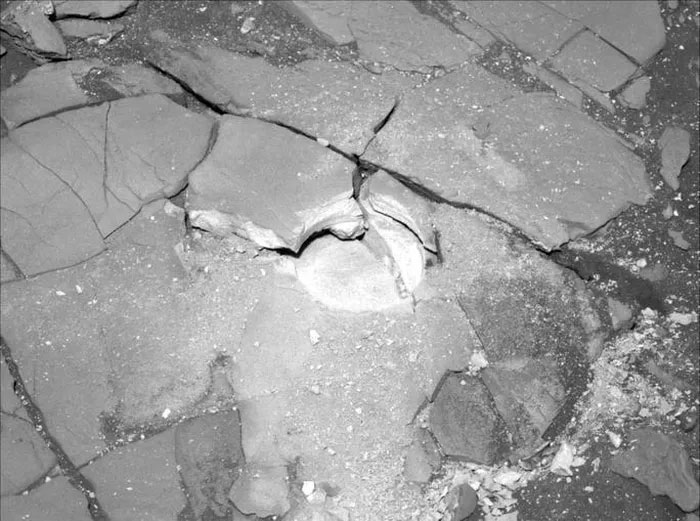New images captured by NASA’s Perseverance rover, currently operating on the plains of Jezero Crater on Mars, provide a close-up view of an area that may contain evidence of extraterrestrial life.
According to Sci-Tech Daily, Perseverance obtained this image using its Left Mastcam-Z camera, a pair of cameras mounted on the rover’s “mast.”
The photo depicts an area known as Hogwallow Flats, nicknamed “the bacon strip,” which features numerous fine-grained rocks. The name “bacon strip” comes from the brightly striped rocks in this area, resembling strips of bacon in a previous image captured by the HiRISE orbiter.

The image from Perseverance shows the area it is about to grind, which is rich in fine-grained rocks that could be a treasure trove of extraterrestrial life – (Photo: NASA/JPL-Caltech/ASU)
Preliminary evidence suggests that the rocks at Hogwallow Flats may be particularly rich in fine grains, which are one of the best opportunities for preserving evidence of life. NASA has long been on the hunt for ancient organic molecules that they believe still exist somewhere in Martian materials.
Perseverance will proceed to grind rocks at Hogwallow Flats, similar to its activities at two other locations within the Jezero plains, with “many valuable scientific data,” according to the space agency’s statement.
Large and complex molecules often break down into smaller molecules over time due to radiation from the Sun and reactions with rocks and the atmosphere. Therefore, if there was extraterrestrial life in Jezero 3-4 billion years ago, as many studies predict, most large organic molecules would no longer be present.
To have a chance of discovering evidence of life in the samples collected by Perseverance, NASA needs to gather rock samples with the highest likelihood of preserving complex organic molecules – fine-grained rocks. This is because fine-grained rocks are more likely to contain a larger amount of clay minerals than rocks that are predominantly sandy, gravelly, or rocky.
Clay minerals have charged surfaces that can bond with organic molecules, similar to how magnets with opposite charges stick together. This allows complex organic molecules to be protected from damage in the harsh Martian environment over long periods.


















































